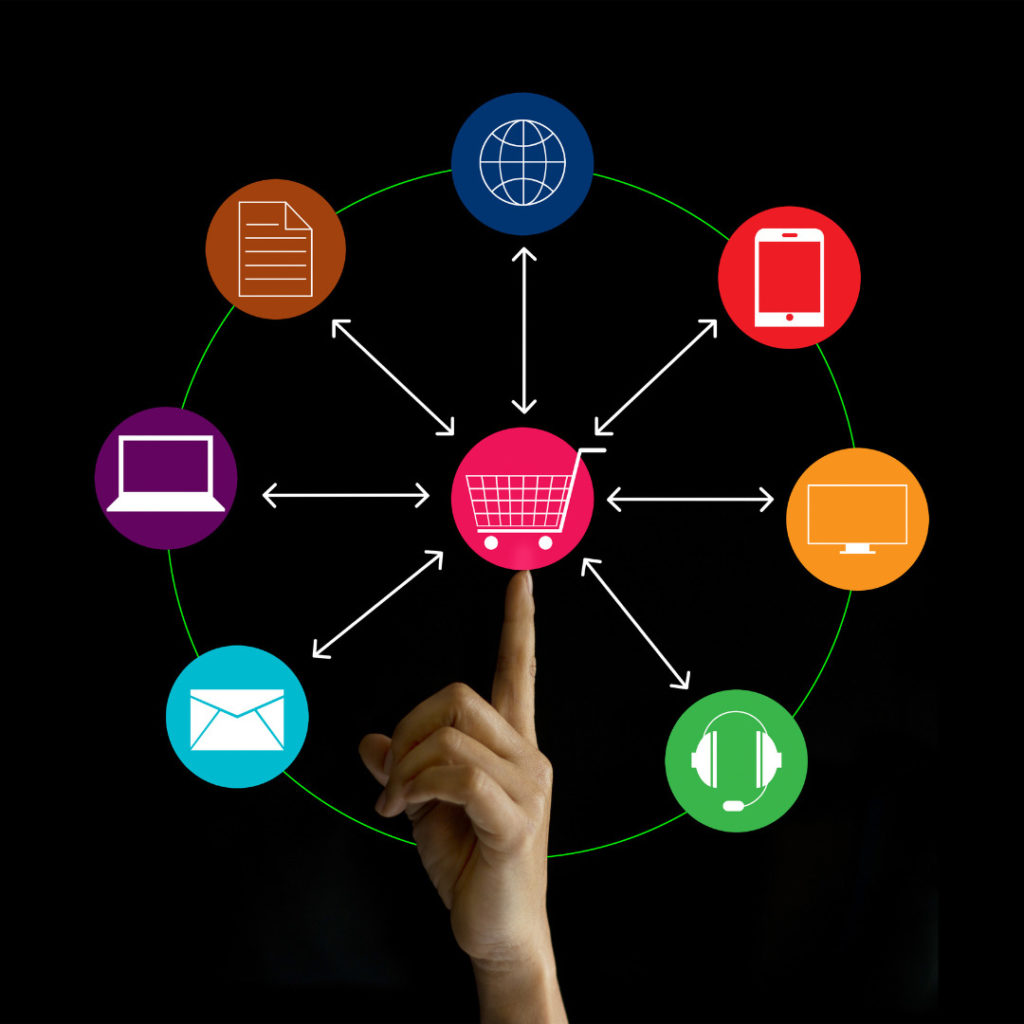Are you a texter or a talker? Do you prefer ordering food at the register or on your own with the touch screen? Or how about emailing or calling? Everybody is different, so giving prospective customers and clients options or choices that align with their interests is important, which brings us to multi-channel marketing.

What is Multi-channel Marketing?
Multi-channel marketing is the use of multiple channels to reach customers and promote a product or service. The channels can include traditional media such as television, print, radio, and digital channels like email, social media, and websites. The goal of multi-channel marketing is to provide customers with a choice and reach them where they are most comfortable, making it easier for them to convert into customers.
The pros of multi-channel marketing include diversifying your audience’s reach and meeting customers where they are. The more channels featuring your ads, the more people you will reach. The cons are that you don’t want to spread yourself too thin. Being a one-man band, for example, makes it tough to blog on the website while posting on multiple social media pages and making YouTube content simultaneously. But if you have a team or partner to work with, that is a whole new ballgame.
Examples of Fortune 500 companies with successful multi-channel marketing strategies include Coca-Cola, Procter & Gamble, and Walmart. Coca-Cola has a strong multi-channel presence through its various social media accounts, website, and traditional advertising such as television and print. Procter & Gamble has a strong online presence with its various websites for different brands and uses social media and email marketing to reach customers. Walmart uses a combination of traditional advertising and digital channels like email, social media, and its website to reach customers.
Small businesses should invest in multi-channel marketing because it can help them reach a wider audience and increase conversions. By using a combination of traditional and digital channels, small businesses can find customers where they are and make it easier for them to convert into customers. Additionally, with the increasing popularity of digital channels, investing in a strong online presence can be crucial for small businesses to compete with larger companies.
Developing a strong multi-channel marketing strategy requires careful planning and execution.
7 Tips to Help You Create an Effective Multi-channel Strategy to Gain Awareness and Increase Sales
- Know Your Audience: Understand your target audience’s preferences, behaviors, and needs. This knowledge will guide your channel selection and content creation to resonate with your audience on each platform.
- Consistent Branding: Maintain a consistent brand identity across all channels. Use the same logo, colors, fonts, and tone of voice to create a unified brand experience, regardless of the platform.
- Channel Selection: Choose channels that align with your target audience’s preferences and behaviors. This could include social media platforms (Facebook, Instagram, Twitter, LinkedIn), email marketing, content marketing, influencer partnerships, and more. Don’t spread yourself too thin; focus on the channels that will yield the best results.
- Tailored Content: Each channel has its own format and audience expectations. Tailor your content to fit the specific platform while maintaining your brand’s messaging. For example, shorter, visually appealing content might work well on Instagram, while longer-form content might be more suitable for a blog like this!
- Integrated Campaigns: Create integrated marketing campaigns that span multiple channels. For instance, launch a campaign with a consistent message and visuals across social media, email, and your website. This helps reinforce your message and creates a cohesive experience for your audience.
- Data-Driven Insights: Continuously analyze data and gather insights from each channel to understand what’s working and what isn’t. Use tools like Google Analytics, social media analytics, and email performance metrics to refine your strategy over time.
- Personalization and Automation: Leverage personalization and automation tools to tailor your messaging to individual customers. Use customer data to send targeted emails, recommend products, and personalize website experiences. Automation can save time and deliver a more tailored experience at scale.
Remember, a successful multi-channel marketing strategy requires adaptation and optimization over time. Stay updated on industry trends and adjust your strategy as needed to meet changing consumer behaviors and preferences.
Start Your Multi-channel Marketing Strategy Today!
In today’s diverse landscape, catering to individual preferences is key to successful marketing. Multi-channel strategies, spanning traditional media and digital platforms like YouTube, social media, and email, empower businesses to connect where customers are most comfortable.
Notably, industry giants like Coca-Cola and Walmart exemplify how multi-channel marketing has been instrumental in their success, but it isn’t just for big players. Even small businesses can expand their reach using multiple marketing channels.
Crafting a seamless strategy demands careful orchestration. Follow the seven tips outlined above for resonance across channels, utilizing personalization and automation for a tailored touch.
Adaptation is imperative in this ever-changing landscape. As trends shift, the rhythm of a successful strategy evolves. Explore our blog with additional free marketing tips and tricks for more help.
Ready to strengthen your multi-channel approach? Contact us today. Let’s collaborate on a strategy that maximizes your reach and drives growth.






